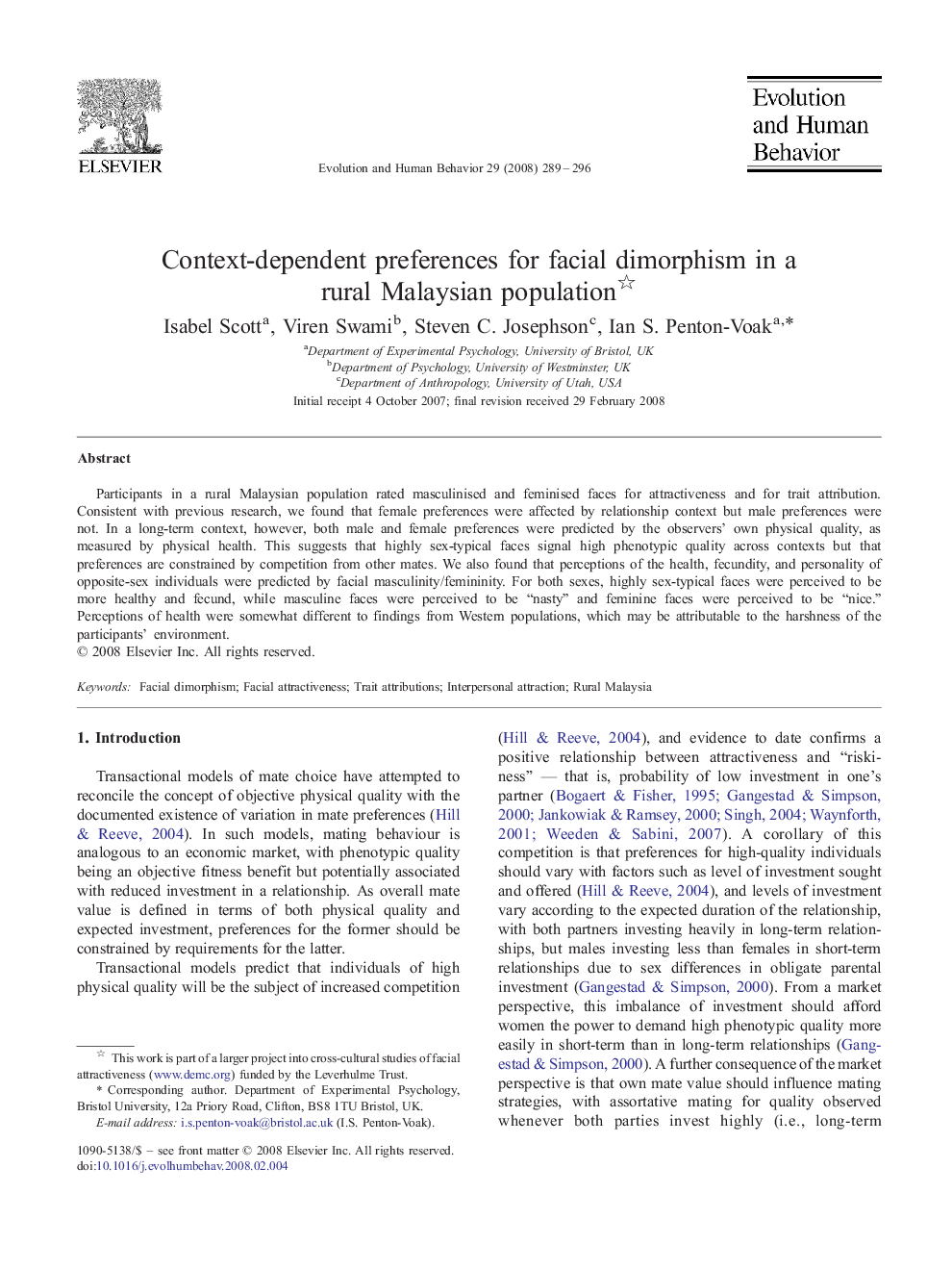| Article ID | Journal | Published Year | Pages | File Type |
|---|---|---|---|---|
| 943422 | Evolution and Human Behavior | 2008 | 8 Pages |
Participants in a rural Malaysian population rated masculinised and feminised faces for attractiveness and for trait attribution. Consistent with previous research, we found that female preferences were affected by relationship context but male preferences were not. In a long-term context, however, both male and female preferences were predicted by the observers' own physical quality, as measured by physical health. This suggests that highly sex-typical faces signal high phenotypic quality across contexts but that preferences are constrained by competition from other mates. We also found that perceptions of the health, fecundity, and personality of opposite-sex individuals were predicted by facial masculinity/femininity. For both sexes, highly sex-typical faces were perceived to be more healthy and fecund, while masculine faces were perceived to be “nasty” and feminine faces were perceived to be “nice.” Perceptions of health were somewhat different to findings from Western populations, which may be attributable to the harshness of the participants' environment.
